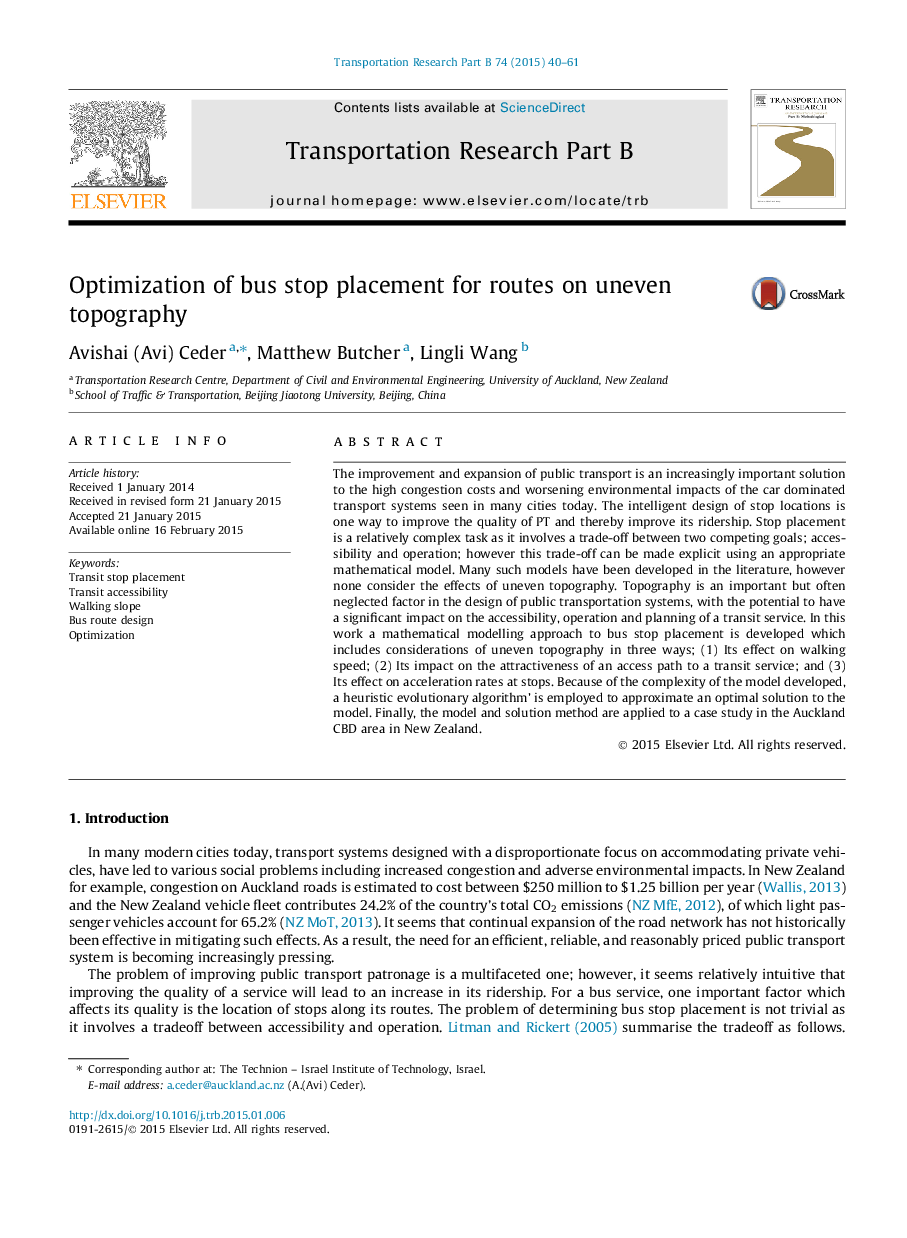| Article ID | Journal | Published Year | Pages | File Type |
|---|---|---|---|---|
| 1131935 | Transportation Research Part B: Methodological | 2015 | 22 Pages |
•Development of a mathematical modelling approach to optimal bus stop placement.•Incorporation of the effects of slope on accessibility and operation of the service.•Development of an evolutionary algorithm to approximate an optimal solution.•Application of model and solution method to a bus route in Auckland CBD, NZ.
The improvement and expansion of public transport is an increasingly important solution to the high congestion costs and worsening environmental impacts of the car dominated transport systems seen in many cities today. The intelligent design of stop locations is one way to improve the quality of PT and thereby improve its ridership. Stop placement is a relatively complex task as it involves a trade-off between two competing goals; accessibility and operation; however this trade-off can be made explicit using an appropriate mathematical model. Many such models have been developed in the literature, however none consider the effects of uneven topography. Topography is an important but often neglected factor in the design of public transportation systems, with the potential to have a significant impact on the accessibility, operation and planning of a transit service. In this work a mathematical modelling approach to bus stop placement is developed which includes considerations of uneven topography in three ways; (1) Its effect on walking speed; (2) Its impact on the attractiveness of an access path to a transit service; and (3) Its effect on acceleration rates at stops. Because of the complexity of the model developed, a heuristic evolutionary algorithm’ is employed to approximate an optimal solution to the model. Finally, the model and solution method are applied to a case study in the Auckland CBD area in New Zealand.
